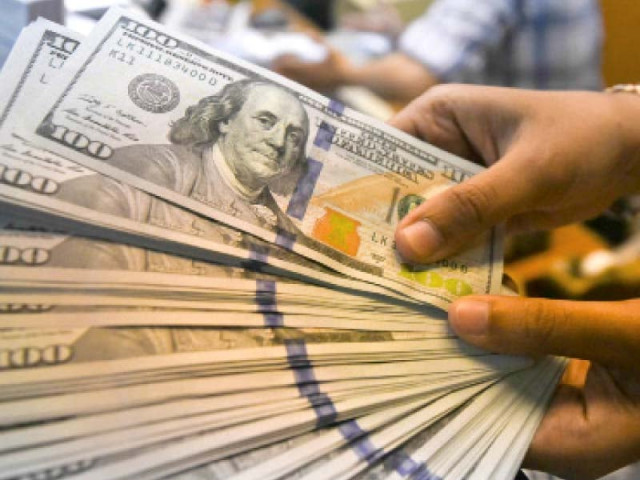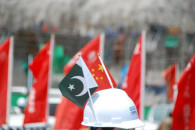In FY20: Govt gets over $13b in foreign loans
New loans contracted to pay $10b maturing debt and cushion reserves

The Pakistan Tehreek-e-Insaf (PTI) government took over $13 billion in foreign loans in the previous fiscal year - the second highest amount in history - to repay maturing external debt and cushion the shrinking foreign exchange reserves.
During fiscal year 2019-20 that ended on June 30, the country received $13.2 billion worth of gross loans from bilateral and multilateral lenders including the International Monetary Fund (IMF) and commercial creditors, according to data compiled by the Ministry of Economic Affairs.
With the fresh borrowing, Pakistan has received a whopping $29.2 billion in foreign loans in the past two years, including $26.2 billion by the government of Prime Minister Imran Khan since August 2018.
Out of the $29.2 billion, $19.2 billion was used to repay the maturing external debt and the remaining balance was added to the external public and publicly guaranteed debt.
Since repayments have been made by contracting new foreign loans, it has increased the cost of debt servicing. For fiscal year 2020-21, the external debt servicing cost has been estimated at Rs315 billion despite over $300 million or about Rs50 billion worth of temporary relief due to the G20 group’s moratorium on debt servicing.
In fiscal year 2018-19, Pakistan had borrowed $16 billion, including balance of payments support from Gulf countries, and returned $9.1 billion worth of loans. In fiscal year 2019-20, the gross foreign loans stood at $13.2 billion and repayments amounted to slightly above $10 billion, according to sources in the Ministry of Finance.
Pakistan does not have any option but to borrow to repay maturing loans and stabilise foreign currency reserves that had dipped below $10 billion in May after the outflow of hot foreign money of over $3 billion.
The withdrawal of hot foreign money, on the one hand, exposed the ill-planning of the State Bank of Pakistan (SBP) and on the other highlighted the fragility of foreign exchange reserves that were built on the back of foreign borrowing.
The dip in foreign exchange reserves triggered panic borrowing by the economic affairs ministry and the finance ministry in June, according to government sources.
The government borrowing from the commercial, bilateral and multilateral creditors exceeded the budgetary target due to the dip in SBP’s foreign currency reserves, low inflows under the Saudi oil facility and the decision not to float Eurobonds valuing at $3 billion.
The PTI government, like its predecessor, has also been unable to fully capitalise on non-debt creating inflows like exports, remittances and foreign direct investment.
Bilateral creditors disbursed $629 million in the last fiscal year against the budgetary target of $480 million. The utilisation of Saudi oil facility remained low at around $770 million against the target of $3.2 billion. China gave $488 million in bilateral loan against earlier estimate of $402 million.
Multilateral creditors disbursed $5.54 billion in loans in the previous fiscal year, according to the Ministry of Economic Affairs’ statistics.
The Asian Development Bank (ADB) provided $2.8 billion, exceeding the annual target of $1.7 billion. However, out of the $2.8 billion, the ADB’s budgetary support loans amounted to $2.3 billion including a billion dollars for the crisis response facility. The IMF disbursed loans of $2.84 billion, including $1.4 billion in emergency financing in response to Covid-19.
The Islamic Development Bank (IDB) disbursed $869 million under the oil credit facility against the estimate of $1.1 billion.
The World Bank released $1.32 billion against the annual estimate of close to $1.2 billion. The Asian Infrastructure Investment Bank (AIIB) gave $508 million in loan.
Like the previous Pakistan Muslim League-Nawaz (PML-N) government, the PTI administration also relied on short-term foreign commercial loans. Against the budgetary estimate of $2 billion, it took $3.4 billion in foreign commercial loans.
Commercial loans are considered expensive due to their short maturity period and relatively higher interest rates compared with the official bilateral and multilateral credit.
Two Chinese financial institutions, China Development Bank ($1.7 billion) and Bank of China ($500 million), provided about two-thirds or $2.2 billion of total foreign commercial loans. Dubai Bank extended $564 million, Ajman Bank $300 million, Citibank $148 million, Standard Chartered $27 million and Suisse Bank AG $205 million, according to the economic affairs ministry data.
Pakistan has also planned to seek $15 billion in gross foreign loans in new fiscal year 2020-21 aimed at servicing its maturing external public debt and building foreign currency reserves in the absence of non-debt creating inflows.
Out of the estimated external borrowing of $15 billion, nearly $10 billion, or two-thirds, will be used to return the maturing loans, excluding interest payments.
Published in The Express Tribune, July 25th, 2020.
Like Business on Facebook, follow @TribuneBiz on Twitter to stay informed and join in the conversation.

















COMMENTS
Comments are moderated and generally will be posted if they are on-topic and not abusive.
For more information, please see our Comments FAQ